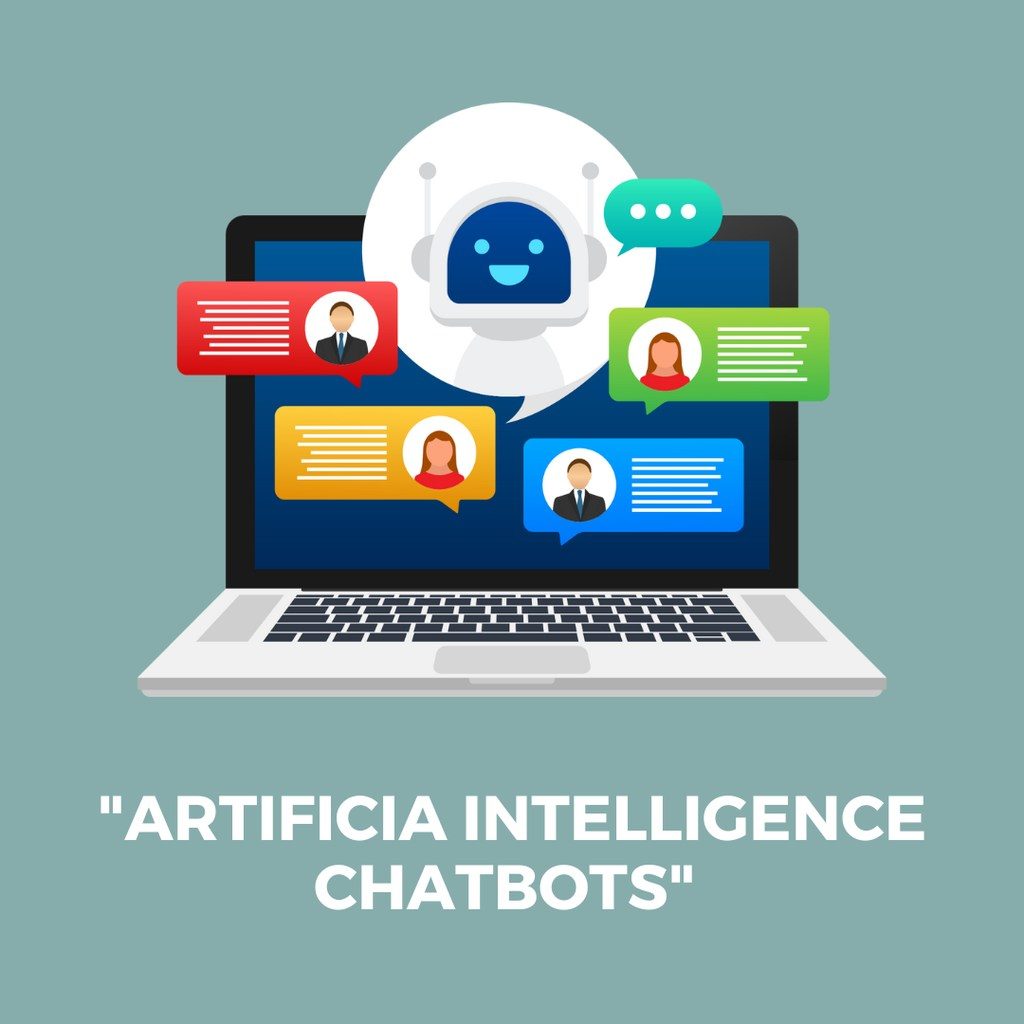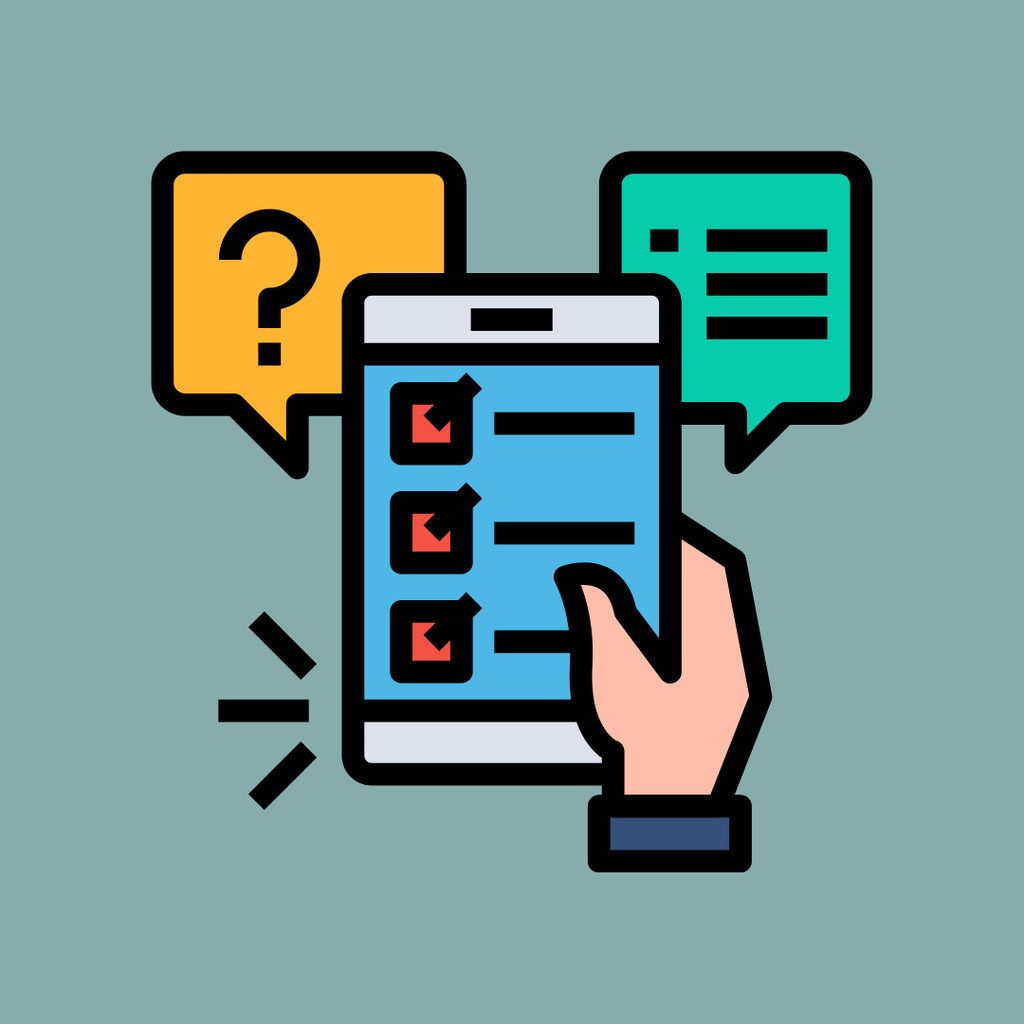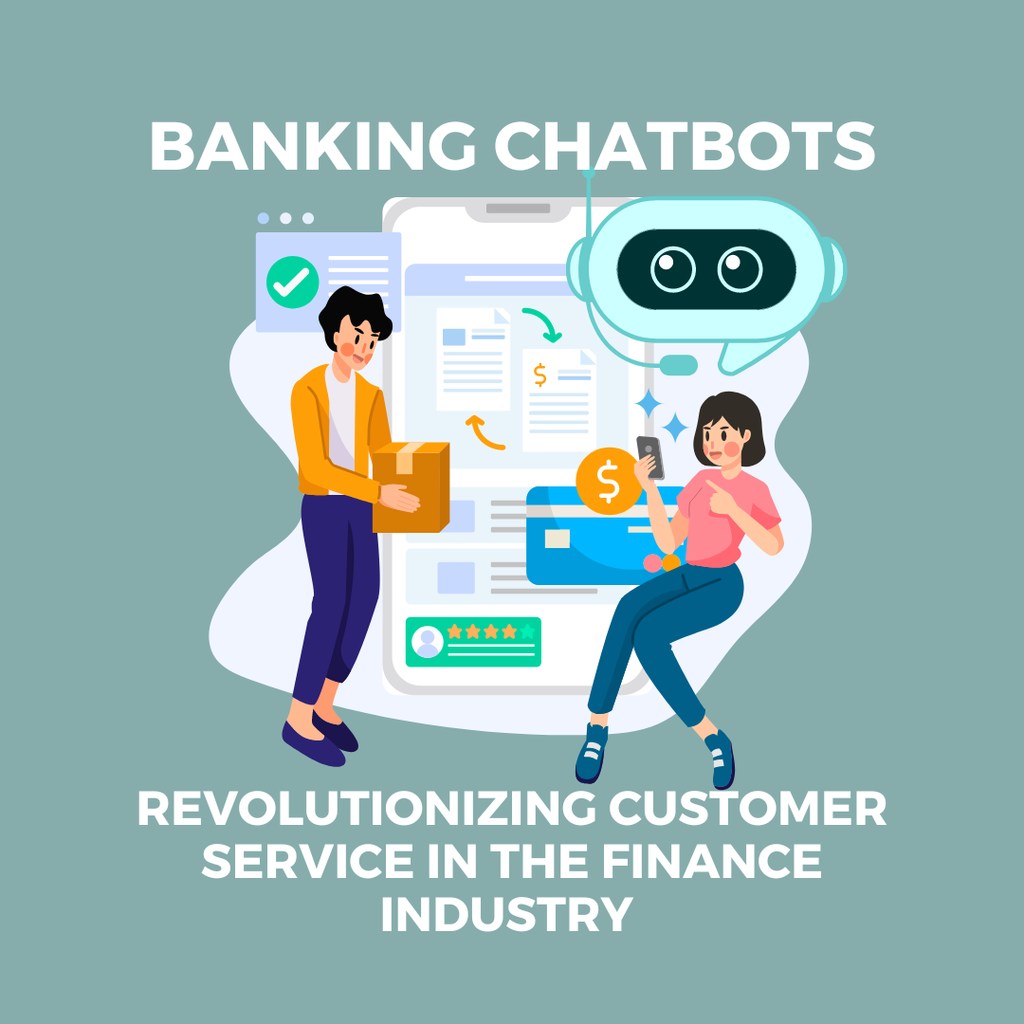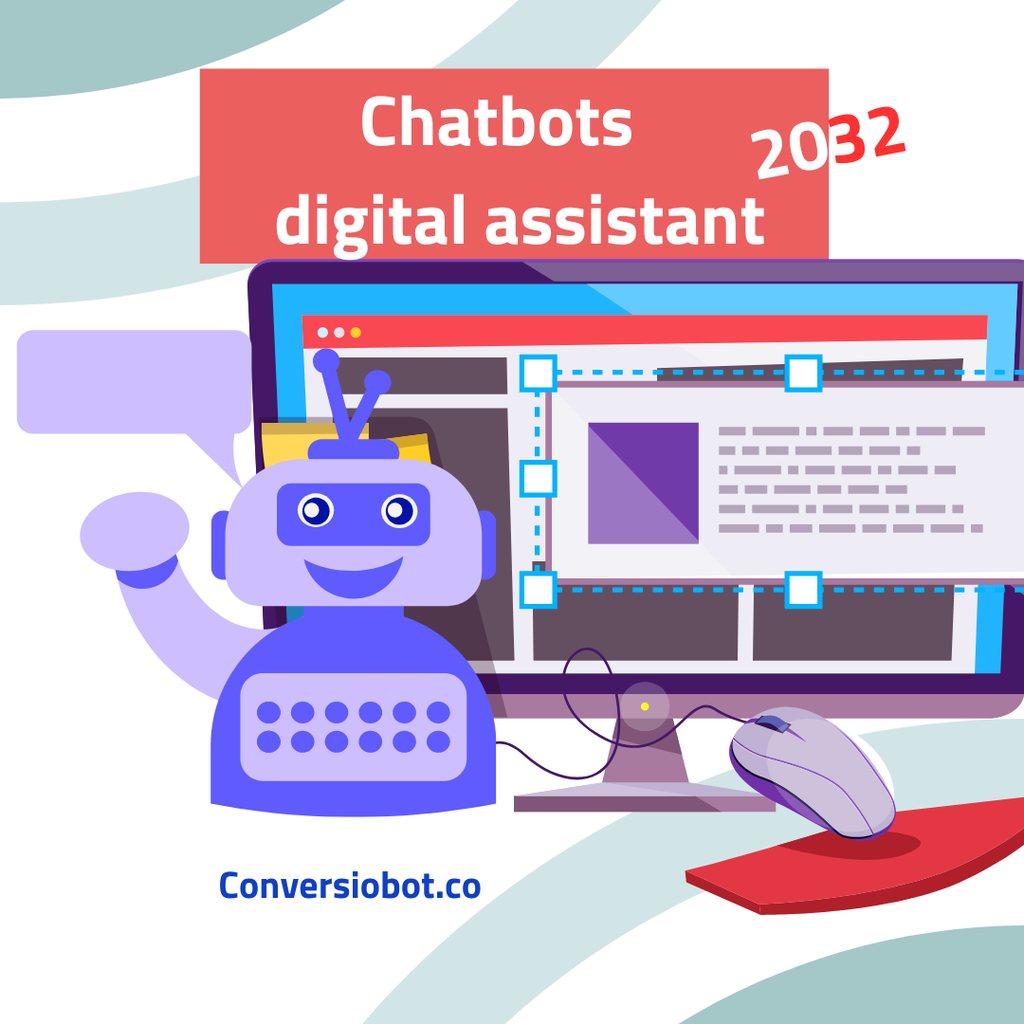"Revolutionizing Customer Experience and Business Efficiency with AI Chatbots"
Artificial Intelligence (AI) chatbots are quickly becoming an essential tool for businesses looking to improve customer experience and streamline operations. These intelligent virtual assistants use natural language processing and machine learning algorithms to provide personalized experiences and handle routine queries and tasks. From customer service and healthcare to e-commerce and education, AI chatbots are being used in a wide range of industries and use cases. In this blog, we will explore how AI chatbots are revolutionizing customer experience and business efficiency. We will provide a comprehensive overview of AI chatbots, exploring how they work, the different types of chatbots, their advantages and challenges, use cases, and the future of chatbots. Whether you’re a business owner, marketer, or simply interested in the potential of AI technology, this blog will provide you with valuable insights into the world of AI chatbots and how they can transform the way you do business. Join us as we explore the exciting potential of AI chatbots and their role in shaping the future of customer experience and business efficiency.
Definition of artificial intelligence chatbots
Artificial intelligence chatbots, or AI chatbots, are computer programs that use artificial intelligence technology to simulate human-like conversations with users. They are designed to understand natural language and provide helpful responses or complete tasks for users, such as answering questions, making reservations, or ordering products. Unlike traditional chatbots that use rule-based systems, AI chatbots use machine learning and natural language processing to understand and respond to user queries.
Importance of AI chatbots in today's world
AI chatbots are becoming increasingly important in today’s world, as more and more businesses and organizations look to automate customer service and support processes. They can provide quick and efficient responses to customers’ questions and concerns, and can help streamline business operations and reduce costs. Additionally, AI chatbots can provide a personalized experience for customers, which can lead to increased customer satisfaction and loyalty.
Purpose of the article
The purpose of this article is to provide an introduction to AI chatbots, including their definition, importance, and potential uses. We will explore how AI chatbots work, their benefits and challenges, and some of the industries that are already using them. We will also discuss the future of AI chatbots and their potential impact on the job market and society as a whole.
How AI Chatbots Work
Natural Language Processing (NLP)
Natural Language Processing (NLP) is a subfield of artificial intelligence that focuses on the interaction between computers and humans using natural language. AI chatbots use NLP to analyze and understand the input from users, such as text or voice commands. They use techniques such as semantic analysis and entity recognition to interpret the user’s query and determine the appropriate response.
Machine Learning (ML)
Machine Learning (ML) is a branch of artificial intelligence that allows computer systems to learn and improve from experience without being explicitly programmed. AI chatbots use ML algorithms to improve their performance over time by analyzing large amounts of data and learning from past interactions. They can recognize patterns in the user’s input and generate appropriate responses based on that information.
Neural Networks
Neural Networks are a type of machine learning algorithm that are modeled after the structure and function of the human brain. AI chatbots use neural networks to analyze and understand natural language, enabling them to respond in a more human-like way. They can also learn from previous interactions and adjust their responses accordingly.
Chatbot Architecture
Chatbot Architecture refers to the design and structure of the chatbot system. AI chatbots typically consist of three components: the User Interface, the Natural Language Processor, and the Dialog Manager. The User Interface is the platform through which users interact with the chatbot, such as a website or messaging app. The Natural Language Processor analyzes and understands the user’s input, and the Dialog Manager determines the appropriate response based on the user’s query.
Example of a Chatbot in Action
An example of an AI chatbot in action is a virtual assistant like Siri or Alexa. These chatbots use natural language processing and machine learning algorithms to understand and respond to user queries. Users can ask these virtual assistants to perform tasks such as setting reminders, making phone calls, or playing music. The chatbot system analyzes the user’s query and generates a response based on the user’s intent. As the user interacts more with the chatbot, it learns from past interactions and becomes better at providing accurate and helpful responses.
Types of AI Chatbots (continued)
When it comes to choosing a type of AI chatbot, businesses and organizations should consider several factors, such as the complexity of tasks to be performed, the level of personalization required, and the resources available to develop and maintain the chatbot.
Rule-based chatbots are the oldest type of chatbots and are still used widely in various industries. These chatbots use a set of predetermined rules and decision trees to provide responses to user queries. While they are limited in their capabilities, they are cost-effective and easy to implement. Rule-based chatbots are commonly used for tasks such as answering frequently asked questions or providing basic customer support.
AI-powered chatbots, on the other hand, use machine learning algorithms to analyze and understand user queries. They can learn from past interactions to improve their performance over time, and can provide more personalized and accurate responses. AI-powered chatbots are ideal for tasks such as providing product recommendations, personalized customer support, or handling complex queries.
Task-specific chatbots are designed to perform a specific task, such as booking appointments or making reservations. These chatbots are optimized for a particular task and can provide efficient and personalized responses. They are commonly used in industries such as healthcare, where chatbots can help patients book appointments or provide medical advice.
General-purpose chatbots are designed to handle a wide range of tasks and queries. These chatbots are typically more complex than task-specific chatbots and are trained on large datasets of user interactions. They can handle a variety of tasks such as customer support, e-commerce transactions, and scheduling appointments. General-purpose chatbots are commonly used in industries such as e-commerce, where chatbots can help customers find products and complete transactions.
Voice-based chatbots are becoming increasingly popular as more and more users adopt voice-enabled devices. These chatbots use speech recognition technology to interact with users and can perform tasks such as playing music, answering questions, or making phone calls. Voice-based chatbots are commonly used in industries such as entertainment and hospitality, where chatbots can help users find restaurants or book tickets to events.
In conclusion, there are various types of AI chatbots, each with their own strengths and weaknesses. The choice of chatbot type depends on the specific use case and the requirements of the organization or business. Regardless of the type of chatbot, AI-powered chatbots are becoming increasingly important in today’s world, as they can provide personalized and efficient customer experiences, streamline business operations, and reduce costs.
Advantages of AI Chatbots
One advantage of AI chatbots is their ability to handle a large volume of queries simultaneously. This can be particularly useful in industries where customer support is a significant expense, such as banking or insurance. AI chatbots can quickly and efficiently handle routine queries, freeing up human agents to handle more complex queries or focus on other tasks. This can lead to significant cost savings for businesses while also improving the overall customer experience.
Another advantage of AI chatbots is their ability to provide personalized experiences for customers. For example, e-commerce chatbots can analyze past interactions and user data to generate personalized recommendations and offers. This can lead to increased customer satisfaction and loyalty, as users feel that the chatbot understands their needs and preferences. Personalization is becoming increasingly important in today’s world, as customers expect more tailored experiences from businesses and organizations.
AI chatbots are also highly scalable, meaning that they can easily handle a large volume of queries and can be scaled up or down depending on demand. This can be particularly useful for businesses with fluctuating demand, such as online retailers during peak shopping seasons. Chatbots can quickly and efficiently handle increased query volumes, without the need for significant investments in additional staff or resources.
In healthcare, AI chatbots are being used to provide medical advice and triage patients. For example, chatbots can analyze symptoms and recommend appropriate courses of action, such as scheduling an appointment with a doctor or going to the emergency room. This can help reduce wait times and improve patient outcomes, while also freeing up medical staff to handle more urgent cases.
In conclusion, AI chatbots offer numerous advantages to businesses and organizations. They can provide cost-effective solutions, increased efficiency, personalization, and scalability. They are being used in a wide range of industries, from customer support and e-commerce to healthcare and finance. As AI technology continues to advance, chatbots are becoming more sophisticated and capable of handling more complex tasks and queries. Chatbots are quickly becoming a crucial component of modern business operations, and their use is expected to increase significantly in the coming years.
Challenges of AI Chatbots
Language barriers
Language barriers are a significant challenge for AI chatbots, particularly in international markets. However, advances in natural language processing technology are helping to overcome this challenge. Chatbots can now analyze and understand multiple languages and accents, enabling them to communicate more effectively with users around the world. Additionally, chatbots can use machine translation technology to translate messages from one language to another in real-time, further improving their ability to communicate with users.
Security concerns
Security concerns are another challenge for AI chatbots. However, measures such as encryption and multi-factor authentication can help to mitigate these concerns. Additionally, businesses can implement robust security protocols and regularly test their systems for vulnerabilities. With the increasing sophistication of AI chatbots, it is becoming more important than ever to prioritize security measures and ensure that chatbots are protected from cyber attacks.
Ethical considerations
Ethical considerations are also important to address when implementing AI chatbots. To avoid potential bias and discrimination, businesses can ensure that their chatbots are trained on diverse data sets and use algorithms that are free from bias. Additionally, businesses can regularly test their chatbots for fairness and bias, and take steps to address any issues that are identified. To improve user experience, businesses can also incorporate ethical considerations such as empathy and emotional intelligence into their chatbot design.
User adoption
User adoption is a challenge that can be addressed through education and training. Businesses can provide users with tutorials and training resources to help them understand how to interact with chatbots effectively. Additionally, businesses can provide users with incentives for using chatbots, such as special offers or rewards. By addressing user adoption challenges, businesses can encourage more users to interact with chatbots, leading to increased efficiency and cost savings.
Integration with existing systems
Integration with existing systems is another challenge that can be addressed through careful planning and implementation. Businesses can work with IT teams and software vendors to ensure that chatbots are compatible with existing platforms and systems. Additionally, businesses can use APIs and other integration tools to streamline the integration process and reduce costs. By carefully integrating chatbots with existing systems, businesses can ensure that they are able to take advantage of the full range of benefits that AI chatbots offer.
In conclusion, while AI chatbots present significant challenges, these challenges can be overcome through advances in technology and careful planning and implementation. By addressing language barriers, security concerns, ethical considerations, user adoption, and integration with existing systems, businesses can take full advantage of the benefits that AI chatbots offer. AI chatbots are expected to play an increasingly important role in modern business operations, and businesses that invest in chatbot technology are likely to see significant improvements in efficiency, cost savings, and customer satisfaction.
Use Cases of AI Chatbots
Customer service
One of the most common use cases for AI chatbots is in customer service. Chatbots can handle routine queries and tasks, freeing up human agents to handle more complex queries or focus on other tasks. Chatbots can provide 24/7 availability and can respond quickly to queries, leading to increased customer satisfaction and loyalty. Chatbots can be used in a wide range of industries, from hospitality and retail to finance and insurance.
Healthcare
AI chatbots are also being used in the healthcare industry. Chatbots can provide medical advice, help patients book appointments, and even monitor patient health remotely. Chatbots can help reduce wait times and improve patient outcomes, while also freeing up medical staff to handle more urgent cases. Additionally, chatbots can provide a more personalized and convenient experience for patients, leading to increased satisfaction and loyalty.
Education
AI chatbots are also being used in the education industry. Chatbots can help students with homework, provide tutoring and feedback, and even answer questions about college admissions. Chatbots can provide a more personalized and efficient learning experience for students, helping them to achieve better outcomes. Additionally, chatbots can help reduce the workload for teachers, enabling them to focus on other tasks.
E-commerce
AI chatbots are being used in the e-commerce industry to provide personalized product recommendations, answer customer queries, and handle transactions. Chatbots can analyze past interactions and user data to generate personalized recommendations and offers. This can lead to increased customer satisfaction and loyalty, as users feel that the chatbot understands their needs and preferences. Chatbots can help reduce the workload for customer support teams and streamline business operations.
Banking and finance
AI chatbots are also being used in the banking and finance industry. Chatbots can help customers with routine tasks such as checking balances, making transfers, and paying bills. Chatbots can provide personalized financial advice and help customers make informed decisions about their finances. Additionally, chatbots can help reduce wait times and improve the overall customer experience, leading to increased satisfaction and loyalty.
AI chatbots are being used in a wide range of industries and use cases. From customer service and healthcare to education, e-commerce, and banking, chatbots are helping businesses and organizations to improve efficiency, reduce costs, and provide personalized experiences for customers. As AI technology continues to advance, chatbots are becoming more sophisticated and capable of handling more complex tasks and queries. Chatbots are quickly becoming a crucial component of modern business operations, and their use is expected to increase significantly in the coming years.
Future of AI Chatbots
Advancements in NLP and ML
The future of AI chatbots is likely to see continued advancements in natural language processing (NLP) and machine learning (ML) technology. Chatbots will become more sophisticated and capable of handling more complex tasks and queries, leading to more personalized and efficient experiences for users. Additionally, chatbots will become more fluent in multiple languages and accents, further improving their ability to communicate with users around the world.
Integration with other emerging technologies
AI chatbots are likely to be integrated with other emerging technologies such as augmented reality, virtual reality, and blockchain. For example, chatbots could be used to provide virtual customer support in a virtual reality environment. Additionally, chatbots could use blockchain technology to securely store and share data, improving the overall security and privacy of chatbot interactions.
Increased use in industries
As AI chatbots continue to advance, they are likely to see increased use in a wide range of industries. Chatbots are expected to become more capable of handling complex tasks and queries, making them a valuable tool for businesses and organizations of all sizes. Additionally, chatbots are likely to become more affordable and accessible, further increasing their adoption across industries.
Potential impact on job market
The increasing use of AI chatbots is likely to have an impact on the job market. Some jobs, such as customer support and data entry, may be replaced by chatbots, leading to potential job losses. However, the increased efficiency and cost savings associated with chatbots may also create new job opportunities, particularly in industries that are experiencing growth as a result of chatbot technology.
Ethical considerations
As AI chatbots become more advanced and capable, ethical considerations will become increasingly important. Businesses and organizations must ensure that their chatbots are trained on diverse data sets and use algorithms that are free from bias. Additionally, businesses must prioritize the security and privacy of chatbot interactions, particularly when handling sensitive data such as personal or financial information. By incorporating ethical considerations into their chatbot design and implementation, businesses can help ensure that their chatbots are not only effective but also responsible.
The future of AI chatbots is likely to see continued advancements in NLP and ML technology, increased integration with other emerging technologies, and increased use in a wide range of industries. While the use of chatbots may have an impact on the job market, the increased efficiency and cost savings associated with chatbots may also create new job opportunities. As chatbots become more advanced, it is important for businesses and organizations to incorporate ethical considerations into their chatbot design and implementation to ensure that their chatbots are not only effective but also responsible.
Conclusion
While AI chatbots offer numerous advantages and are becoming increasingly important in modern business operations, it is important for businesses and organizations to approach chatbot implementation with caution. As with any new technology, chatbots present potential risks and challenges that must be carefully considered and managed.
One potential risk associated with chatbots is the potential for bias and discrimination. Chatbots may be trained on biased or incomplete data sets, which can result in discriminatory responses or outcomes. To address this risk, businesses and organizations must ensure that their chatbots are trained on diverse data sets and use algorithms that are free from bias. Additionally, chatbots should be regularly tested for fairness and bias, and steps should be taken to address any issues that are identified.
Another potential risk associated with chatbots is the potential for security breaches and cyber attacks. Chatbots may be vulnerable to hacking and other types of cyber attacks, which can result in the theft of sensitive user data or other security breaches. To address this risk, businesses and organizations must implement robust security protocols and regularly test their chatbots for vulnerabilities. Additionally, chatbots should be designed with privacy and security in mind, and users should be educated on best practices for keeping their information safe.
Finally, chatbots can present potential ethical considerations that must be carefully managed. As chatbots become more sophisticated and capable, they may begin to blur the line between human and machine interactions. This can raise questions about the appropriate use of chatbots in certain contexts, such as healthcare or education. Additionally, chatbots must be designed with empathy and emotional intelligence in mind, to ensure that they provide appropriate and respectful responses to users.
In conclusion, while AI chatbots offer numerous advantages and are becoming increasingly important in modern business operations, businesses and organizations must approach chatbot implementation with caution. By carefully managing potential risks and ethical considerations, businesses and organizations can take full advantage of the benefits that chatbots offer while minimizing potential negative impacts. As AI technology continues to advance, chatbots are likely to become even more sophisticated and capable, offering exciting new possibilities for businesses and organizations around the world.
FAQ
What are chatbots used for?
What are some examples of chatbots?
What are the 4 types of chatbots?
Banking Chatbots Revolutionizing Customer Service in The Finance Industry 2023 Read More »
What is the future of chatbots and digital assistant in the next 2032? Read More »





